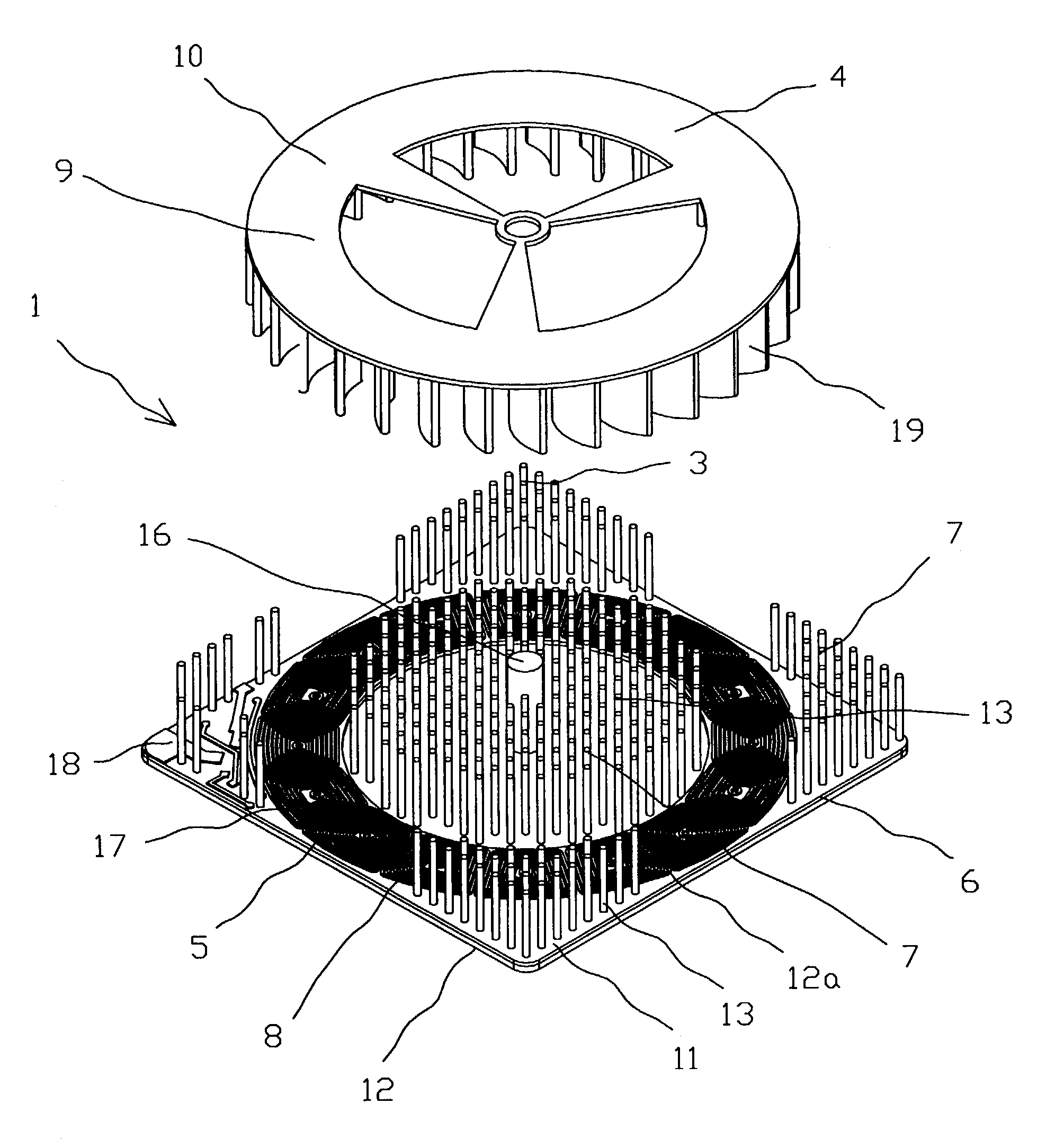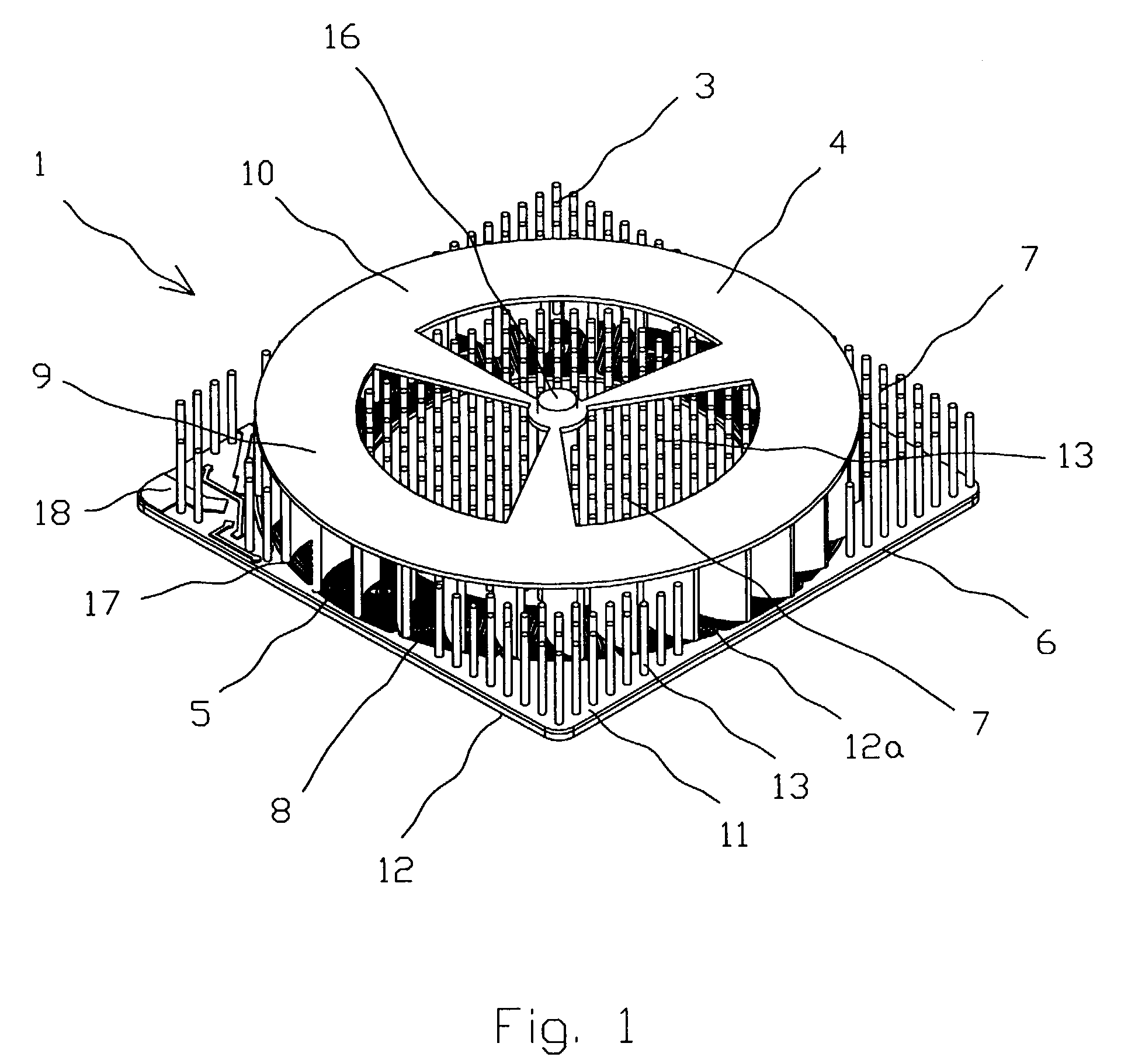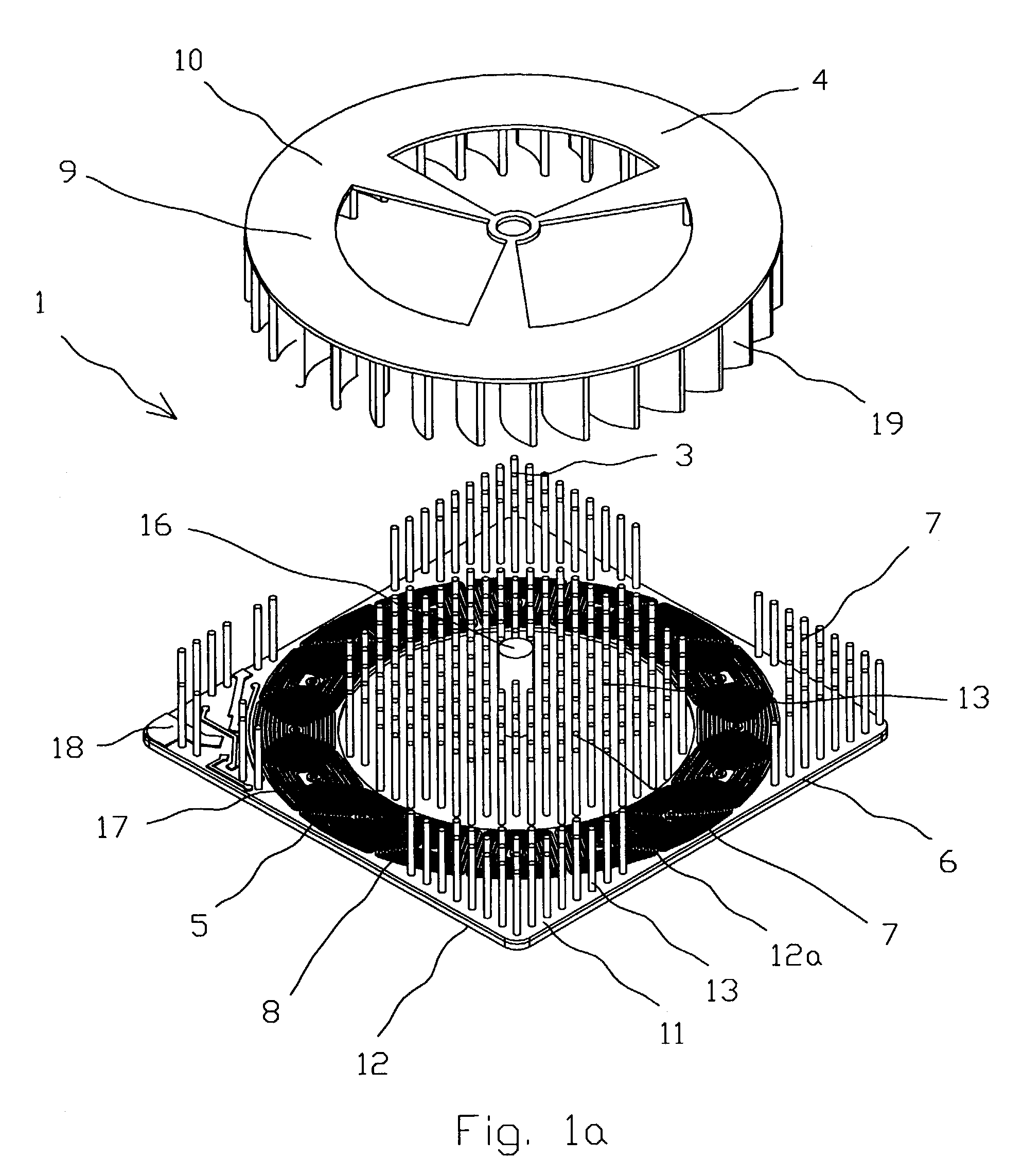Apparatus for cooling of electronic components
a technology for electronic components and cooling devices, applied in lighting and heating apparatus, machines/engines, liquid fuel engines, etc., can solve the problems of unfavorable cooling conditions for the central part of the heatsink located underneath the fan, damage and/or a reduction in operating performance, and many electronic components generate significant amounts of hea
- Summary
- Abstract
- Description
- Claims
- Application Information
AI Technical Summary
Benefits of technology
Problems solved by technology
Method used
Image
Examples
first embodiment
[0028]FIG. 1 is a perspective view showing the present invention;
[0029]FIG. 1a is an exploded view showing a first embodiment of the present invention;
[0030]FIG. 2 is a top plan view of the apparatus in accordance with the present invention shown in FIG. 1;
[0031]FIG. 3 is a perspective view showing the embodiment of the present invention of FIG. 1 with a cover;
[0032]FIG. 4 is a perspective view showing the embodiment of the present invention of FIG. 1 with a cover and additional stator coils thereon;
[0033]FIG. 5 is a perspective view showing an embodiment of the present invention with a rotor of an electric drive removed from the apparatus;
[0034]FIG. 6 is a top plan view of the apparatus in accordance with the present invention shown in FIG. 5;
[0035]FIG. 7 is a perspective view showing the electric drive removed from the apparatus;
[0036]FIG. 8 is a half sectional view of the present invention shown in FIG. 3;
[0037]FIG. 8a is an enlarged perspective view of the part 8a shown in FIG. ...
second embodiment
[0038]FIG. 9 is a perspective view showing the present invention;
[0039]FIG. 10 is a perspective view showing the embodiment of the present invention of FIG. 9 with the apparatus void of a cover;
[0040]FIG. 11 is a perspective view showing the embodiment of the present invention of FIG. 9 with the rotor of an electric drive removed from the apparatus;
[0041]FIG. 12 is a top plan view of the apparatus in accordance with the second embodiment of the present invention shown in FIG. 11.
DETAILED DESCRIPTION OF THE EMBODIMENTS
[0042]Two embodiments of the present invention will be described in detail below with reference to the accompanying drawings.
[0043]FIGS. 1–8, 8a show a first embodiment and FIGS. 9–12 show a second embodiment of the present invention.
[0044]An apparatus 1 (FIGS. 1–4) for cooling of the electronic component 2 (FIG. 8) comprises a heatsink 3, a blower 4 and an electric drive 5. The heatsink 3 (FIGS. 1, 3 and 5) has a base 6 on which a plurality of heat exchange means 7 lik...
PUM
 Login to View More
Login to View More Abstract
Description
Claims
Application Information
 Login to View More
Login to View More - R&D
- Intellectual Property
- Life Sciences
- Materials
- Tech Scout
- Unparalleled Data Quality
- Higher Quality Content
- 60% Fewer Hallucinations
Browse by: Latest US Patents, China's latest patents, Technical Efficacy Thesaurus, Application Domain, Technology Topic, Popular Technical Reports.
© 2025 PatSnap. All rights reserved.Legal|Privacy policy|Modern Slavery Act Transparency Statement|Sitemap|About US| Contact US: help@patsnap.com



